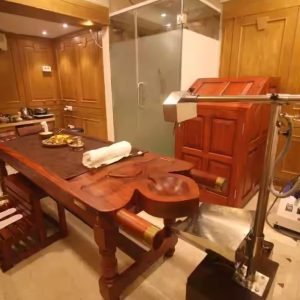Digital Dentistry opens an exploration of innovative technologies. This incorporates digital or
computer-controlled components to carry out dental procedures. On the other hand,
traditional dental mediums use mechanical or electrical procedures. By using computer-based
technology enables dental practices to enhance patient care. Therefore can meet the rising
demands of patients. As a result of the introduction of digital presence in dentistry eliminates manual steps
of dental procedures. This results in a more efficient and automated treatment process
Technologies Used in Digital Dentistry
Digital Radiography: Today dental professionals use digital radiographs for better
diagnosis. It is a type of X-ray imaging by using digital X-ray sensors. Digital
radiography produces a clear map of teeth and dental digital impressions by using
optical face scanners. This technology enables dentists to assess the scans while the
patient is in the chair. Also, it provides easy printing of scans. On comparing to
traditional X – rays digital radiographs emit up to 70 percent less radiation. That is
digital radiography is more environmentally friendly.
Cone- Beam Computed Tomography Imaging (CBCT): It is a rotating X-ray
machine. It provides a three-dimensional view of teeth which ensures efficient
diagnosis. One of the major benefits is, Cone-beam CT can detect oral conditions that
are not identifiable by regular X-ray screenings. Also, it can detect the exact position
of teeth and their roots.
Intra Oral Cameras (IOCs): This is one of the other technologies involved in digital
dentistry. This allows dental practitioners to view clear and accurate images of the
oral anatomy. Also, the camera can magnify images on a computer screen while the
patient is in the chair. And therefore, patients can clearly see what the dentist is doing.
In addition to these, it can provide a detailed view of hard-to-see areas in the mouth.
This helps to identify fractured teeth. The tiny camera enables to detect more on the
3D surface of a tooth. Also, these images can be saved to a
patient’s file for future reference.
3D Printing (CAD/CAM):
This innovative technology in digital dentistry enables practitioners to design and
manufacture dental restorations/ dental implants. Porcelain crowns, bridges, veneer,
Flexible Denture, DMLS, etc are some of such restorations. Traditionally in dental
labs, it will take up to 3 weeks to make the restorations. Due to the influence of
computer-based technology practitioners are able to design, fabricate and insert dental
restorations on the same day. However, this new technology enables the patient to
receive final restoration within a day. Both Computer-Aided Design (CAD) and
Computer-Aided Manufacturing (CAM) requires powerful computers. Also, It reduces
manpower costs in the manufacturing process.
Benefits of Digital Dentistry
a) Accurate Diagnosis: Digital dentistry techniques enable dentists to accurately
identify and thus can diagnose effectively. It results in the determination of
oral diseases in its early stages and thus can start the treatment at right time.
Digital radiography images and CBCT X-rays can be enlarged and thus can
ensure the availability of high-quality images.
b) Reduce Cost and Time: The most attractive and important benefit of digital
dentistry is it can reduce cost and time. That means this
technological assistance enables the practitioner to create a restoration on the
same day rather than waiting days for a laboratory to create a restoration. Due
to the elimination of further appointments patients can save money and time.
c) Improves Patient Experience: As a result of the introduction of digital
influence in the dental industry makes patients more comfortable. Because in
traditional methods impressions are directly taken from the mouth using
various tools makes patients really uncomfortable.
d) Ensure Natural Look: The use of CEREC restorations ensures your natural
smile. Because CEREC technology provides patients with restorations that
match the shape and color of their existing teeth. As a result, patients can leave
the clinic feeling confident and satisfied.
Conclusion
Dentists with years of experience or the student of the dental industry can look back at the
advances in dentistry. And, they can state clearly that the dental profession has experienced an exciting
amount of technological growth. It ensures effective inter-professional and
clinician-patient interactions. Also, provides fresh ways of learning for students. The use of
digital technologies eliminates the effects of dental lab transfer error and stone expansion.





